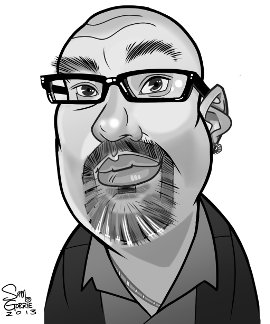Stephen Vance, Editor
 I can already hear the complaints of frustration. Four percent? Really? Our taxes are already too high. Ratepayers aren’t wrong, even councillors and municipal management acknowledge that we’re on the razor’s edge of affordability when it comes to all the various levels of taxation we must dig into our pockets for. On the other hand, those same councillors and municipal managers aren’t wrong when they say that we’re in deep trouble on the infrastructure front, and the money to fund the badly needed repair and rehabilitation of our aging and crumbling roads and bridges has to come from somewhere – or does it?
I can already hear the complaints of frustration. Four percent? Really? Our taxes are already too high. Ratepayers aren’t wrong, even councillors and municipal management acknowledge that we’re on the razor’s edge of affordability when it comes to all the various levels of taxation we must dig into our pockets for. On the other hand, those same councillors and municipal managers aren’t wrong when they say that we’re in deep trouble on the infrastructure front, and the money to fund the badly needed repair and rehabilitation of our aging and crumbling roads and bridges has to come from somewhere – or does it?
As communities across the province continue to grapple with their infrastructure funding gaps for years to come, I suspect we’ll hear terms like ‘compromise’, ‘sacrifice’, or ‘true needs’ tossed around with greater frequency in council chambers and at public meetings. We’ve already had a sampling of this sort of thinking in this municipality with sections of three roads that previously were hard surfaced, but this year were pulverized and returned to gravel. We’ve seen the agonizing over what to do about two small bridges on a lightly travelled gravel road on the outer fringe of our municipality.
We had another small taste of it at Monday’s council meeting when Meaford’s Treasurer said the following:
“We’re going to have to make sacrifices as a community in the service levels we’re going to have to accept from an infrastructure standpoint. Is one break acceptable, is ten breaks acceptable in a watermain? Is one pothole acceptable, or ten? Is gravel acceptable where surface treatment used to be? Those are going to be the tough decisions that councils will have to make over the next three years as we build this asset management plan.”
Councillor Steven Bartley, possibly the most conservative member of council, and certainly the most focused on ‘cutting the fat’ (which he conceded at Monday’s council meeting that Meaford has pretty much done as much as is possible), responded with a simple, yet accurate “pretty scary” when told just how dire Meaford’s infrastructure funding gap is. Pretty scary indeed.
I’m no mathematician, so let’s keep the math simple. Currently the Municipality of Meaford generates in the neighbourhood of $12 million from property taxation. With those funds the municipality pays for all of the various services that it offers to its residents, from trash collection to snow removal, to hockey arenas and parks. That $12 million also provides some funding for the maintenance, repair, and rehabilitation of our roads, bridges, pipes, and municipal buildings, but not nearly enough.
The Treasurer told council on Monday that in Meaford our infrastructure funding gap – the amount of infrastructure rehabilitation we should be doing each and every year if we don’t want our roads and bridges to crumble into the ground – is roughly $7 million per year. What that means is that if we are to properly tackle our infrastructure needs, and if we are ever to get to a point that we catch up with the long list of roads and bridges and underground pipes that require significant work, Meaford needs to find $7 million per year more than is generated now. Anyone feel like a 50 percent property tax increase? Because that’s the reality if the funding is to come solely from the community.
Naturally Meaford, along with every other municipality in the province, is in need of and expects assistance from upper levels of government, but very little has been coming in. In a good year, if Meaford is lucky, we might see grant funding from upper levels of government of around $1 million for an infrastructure project – but it’s never guaranteed in any given year that we’ll see any upper level funding at all.
As the years drag on and we venture further into this infrastructure crisis, asking whether a road or two should be pulverized and returned to gravel might not seem like such a silly question. At some point we as citizens will have to do something that will likely prove to be quite difficult – we need to ask ourselves if we have been living beyond our means, and if we could live with less.
Perhaps there are bridges that can and should be forever closed. It’s possible that some roads that are currently paved could serve just as well if they were gravel. Maybe we can’t afford to continue funding what some consider to be ‘frills’ like arenas and swimming pools.
We can’t have our cake and eat it too. We can’t demand that local councils not increase our taxes while we’re screaming for them to fix our roads. We can’t become agitated over a four percent tax increase when 50 percent is what is actually needed.
I don’t envy future councils, no matter what choices they make, especially if they are brave and make some very tough choices; not everyone will be happy – in fact many will be extremely angry.
Brace yourselves, it’s going to be a bumpy ride (and I’m not just talking about a drive along our roads).










